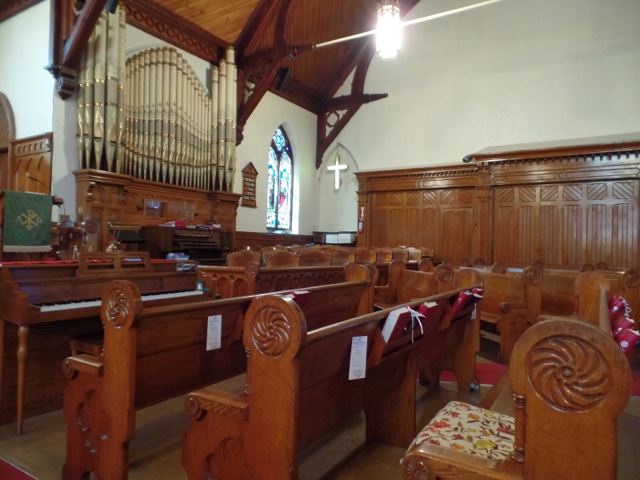 The trading post served as a community gathering spot where news was shared, goods traded, letters posted, etc. Hubbell assisted the Native People in writing letters, settling quarrels and acting as go between with them and the government. He opened his post to everyone as a hospital when the smallpox epidemic hit the reservation. Hubbell encouraged the native weavers and silversmiths in their crafts giving them fair prices for their goods. The Hubbell Trading Post was made a National Historic Site in 1965 with the understanding that it would remain a working trading post.
The trading post served as a community gathering spot where news was shared, goods traded, letters posted, etc. Hubbell assisted the Native People in writing letters, settling quarrels and acting as go between with them and the government. He opened his post to everyone as a hospital when the smallpox epidemic hit the reservation. Hubbell encouraged the native weavers and silversmiths in their crafts giving them fair prices for their goods. The Hubbell Trading Post was made a National Historic Site in 1965 with the understanding that it would remain a working trading post. This is a small wallhanging that I bought. It is made with the corn stalk symbolizing the tree of life and it remains so today in Navajo culture. The cornstalk is standing in a Navajo basket. The weavers today usually do not spin and dye their wool as the process is too labor intensive and takes too long to complete. Using this wall hanging as an example, the weaver would have to do a lot of dyes to make this little rug.
Heading home from Navajo country straight south to Interstate 40, you go right through the Painted Desert and just north of the Petrified Forest. Dave had never stopped to see it and we had time so made a quick swing through both. I had seen it before and had stopped to read all the signs and take numerous pictures with Sandy and Robb when we came down a few years ago. There is lots to see but we were a bit pressed for time. Needless to say, beautiful vistas, petroglyphs, petrified wood, dinosaur bones all there to see. It is worth a longer look but here are a couple of photos that I took.
No shade. It would be miserable here in summer.
We stopped in Holbrook for lunch and decided that we had a bit of time to stop and see what Walnut Canyon near Flagstaff was all about.
Walnut Canyon is also a National Monument. It is very near Flagstaff just off Interstate 40. It is a beautiful canyon with dwellings made by the Sinagua people in the shelter of overhanging cliffs 800 years ago. These people hunted and farmed and gathered useful plants and also traded with neighbors. They were able to farm in that time of more abundant rainfall but there is evidence of water conservation techniques. The Sinagua left the area and may have assimilated with the Hopi according to the literature we got at the Visitor Center. There are lovely trails and access to 25 dwelling rooms but the trail decends 240 steps and my knee was having none of it on that day. So we will return on another day to see these cliff dwellings and enjoy the different plant life zones along the trail.
Instead, we decided the more sedate 0.7 mile Rim Trail was more our speed that day. It was a nice day and the Rim Trail was delightful. An interesting arachnoid caught my eye as we were walking. My first glimpse of a Tarantula in the wild!
He/it was just crossing the path, minding his own business. We did not disturb it but did bring attention to it to others who were walking the trail.
There is a dwelling in there somewhere, I think.
The trail down into the canyon winds around and around. It will be fun to explore on another day. My knee is feeling much better.
So that is the last of the summer excursions of Dave and myself and without Luci the Airstream. With 2017 upon us, we are anticipating camping in the desert with our friends this Christmas and then a round of fiddle contests and bluegrass festivals with camping at each. Be prepared for more Travels with Luci and have a Merry Christmas!




































































